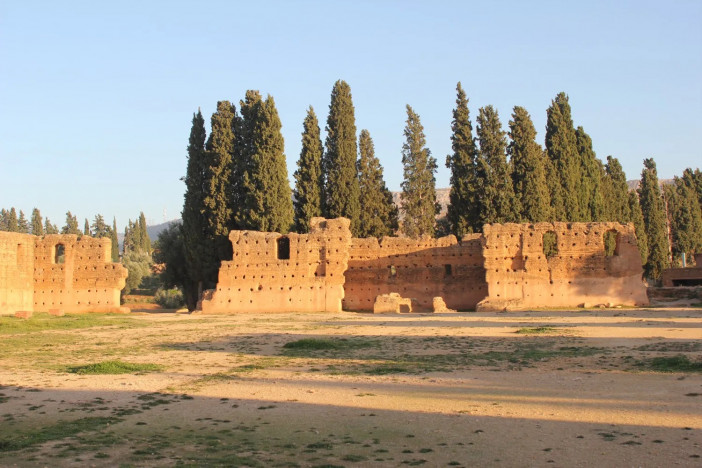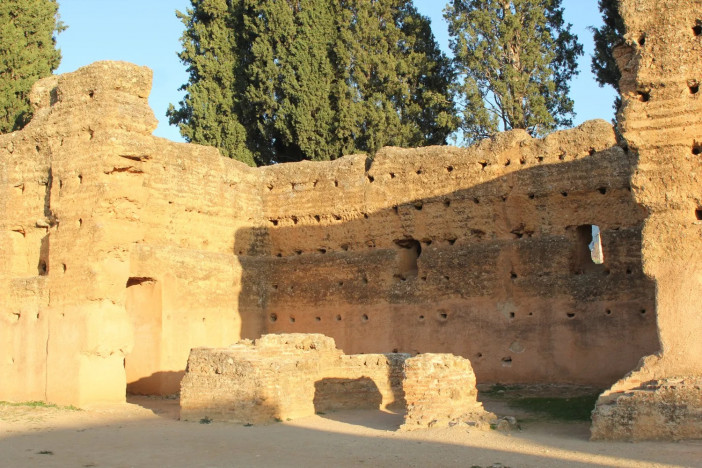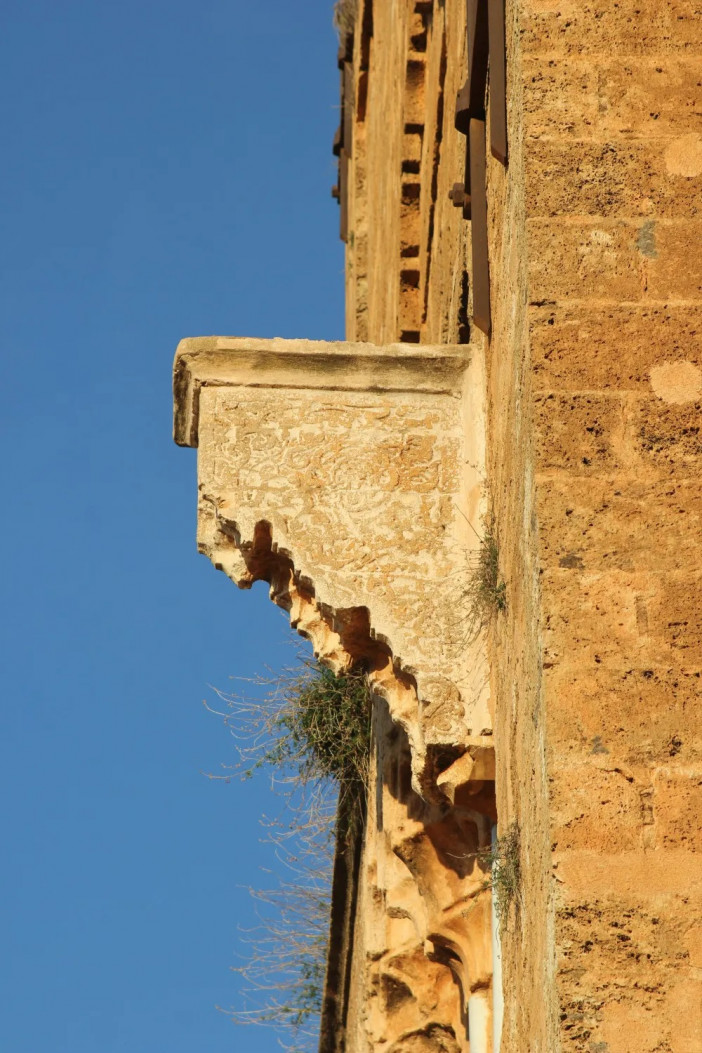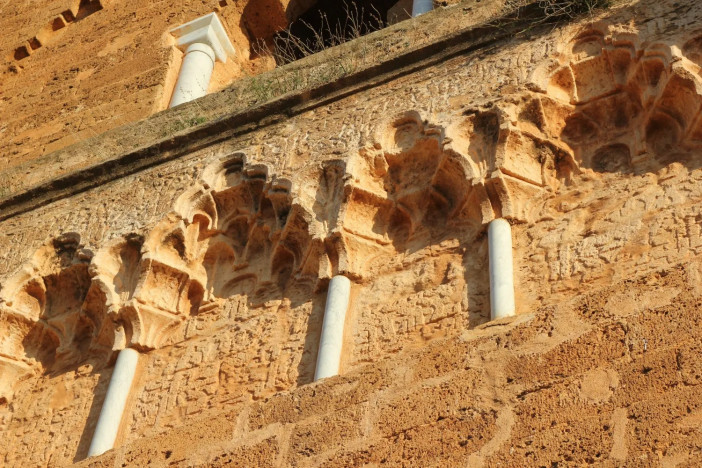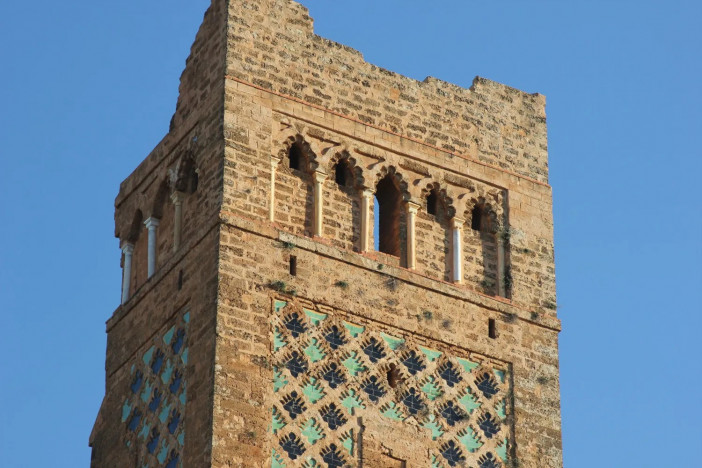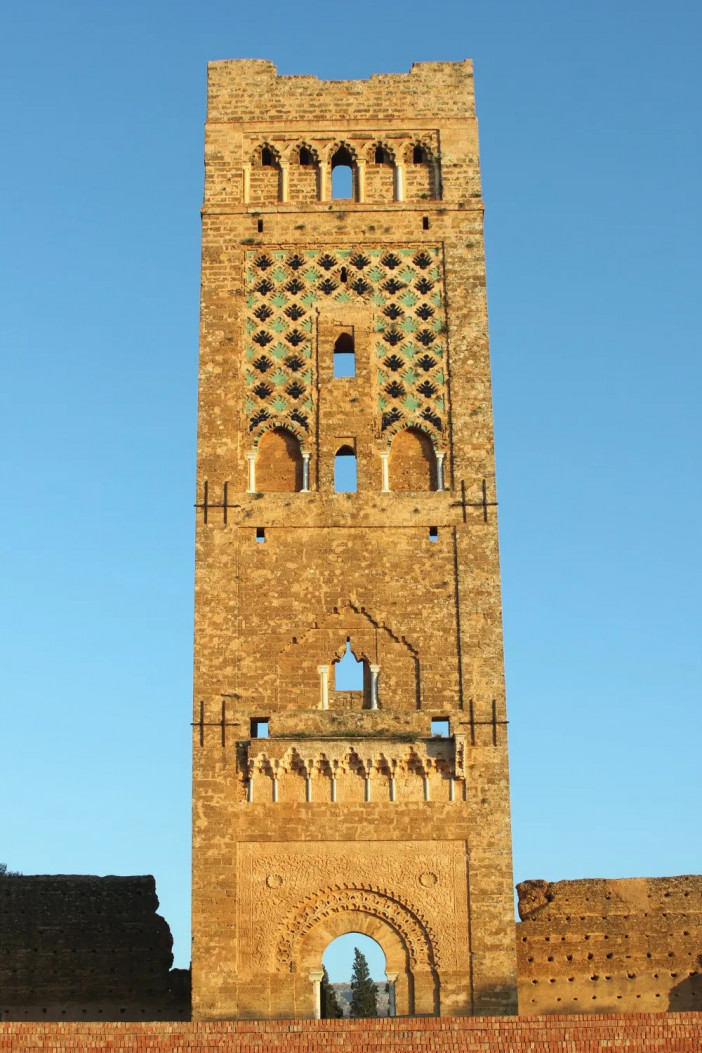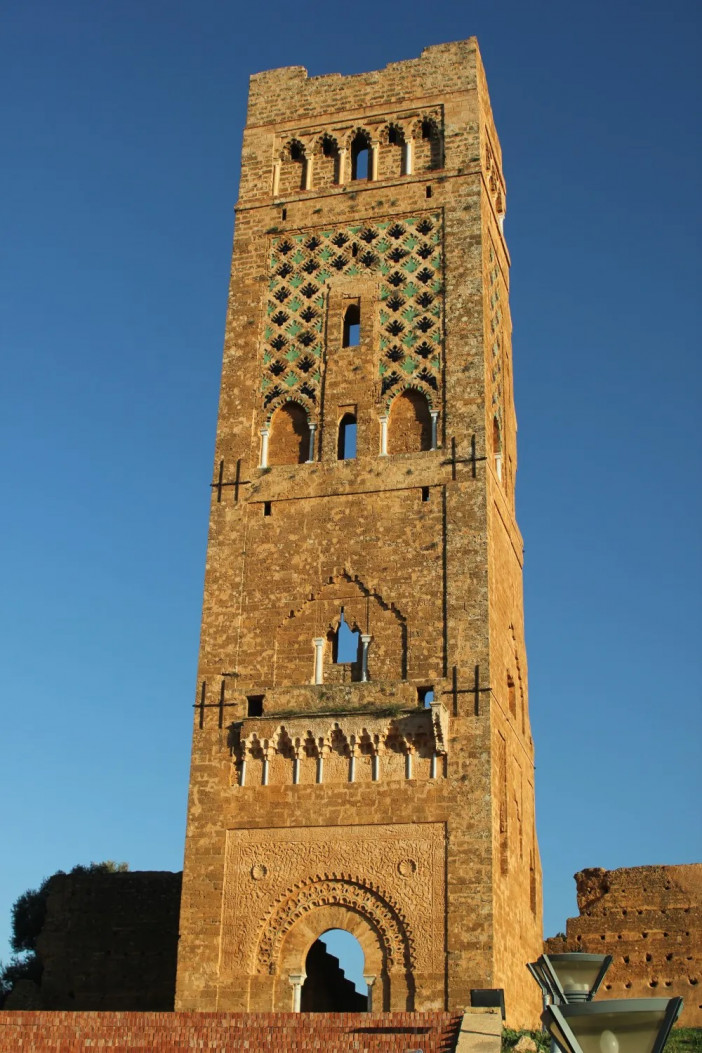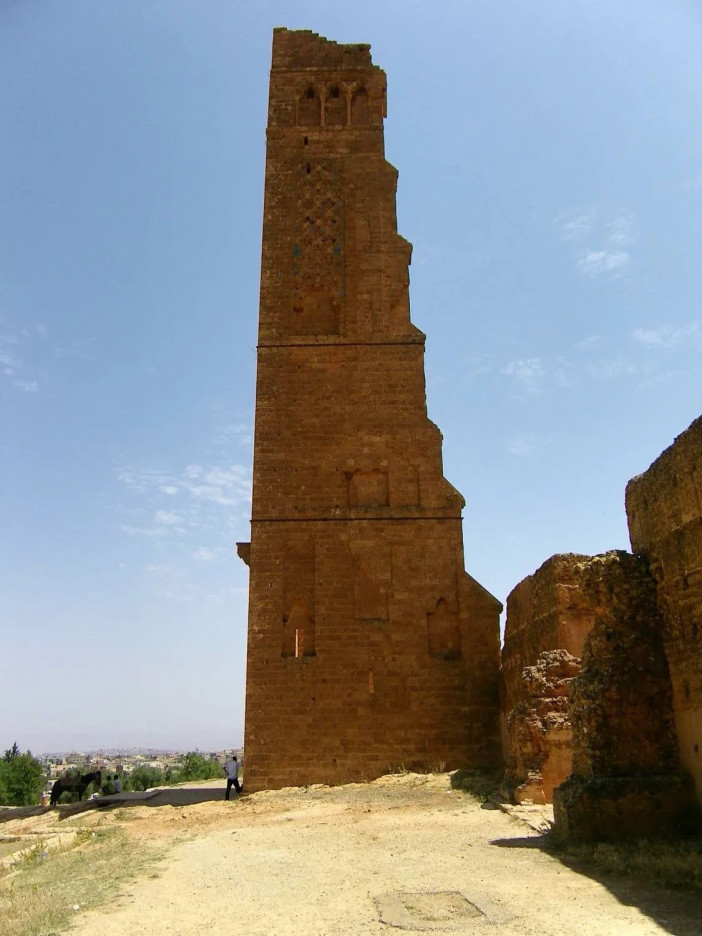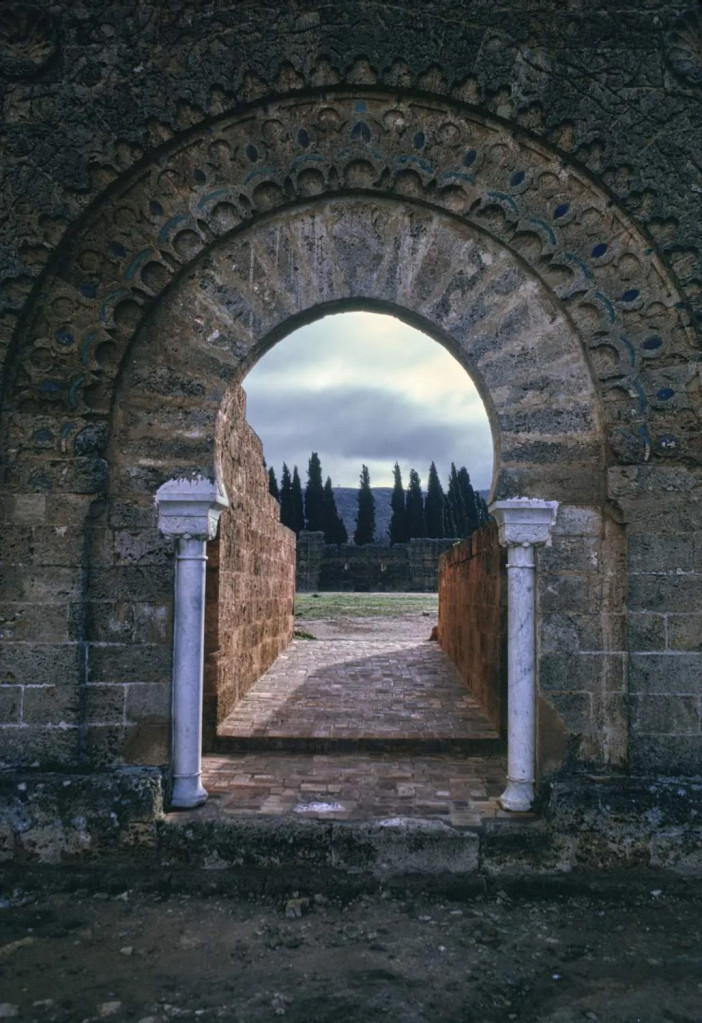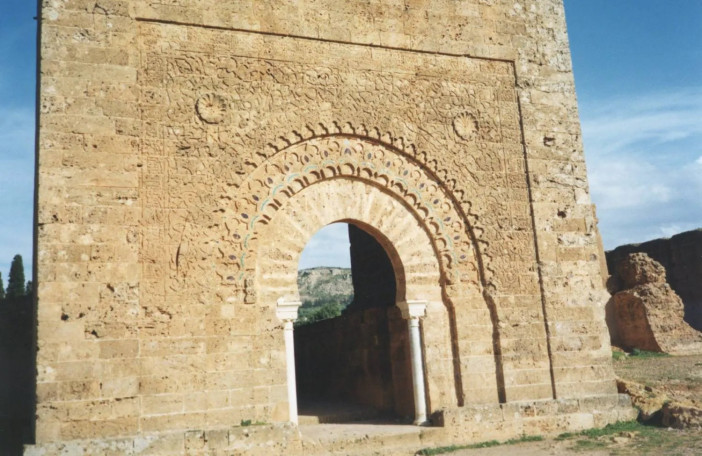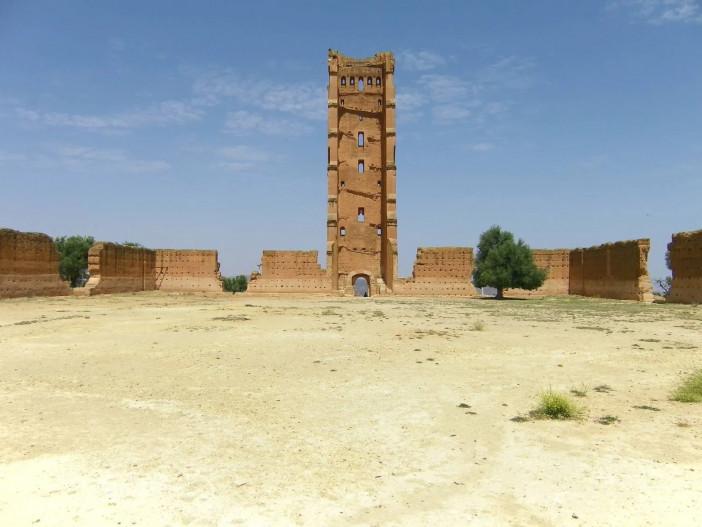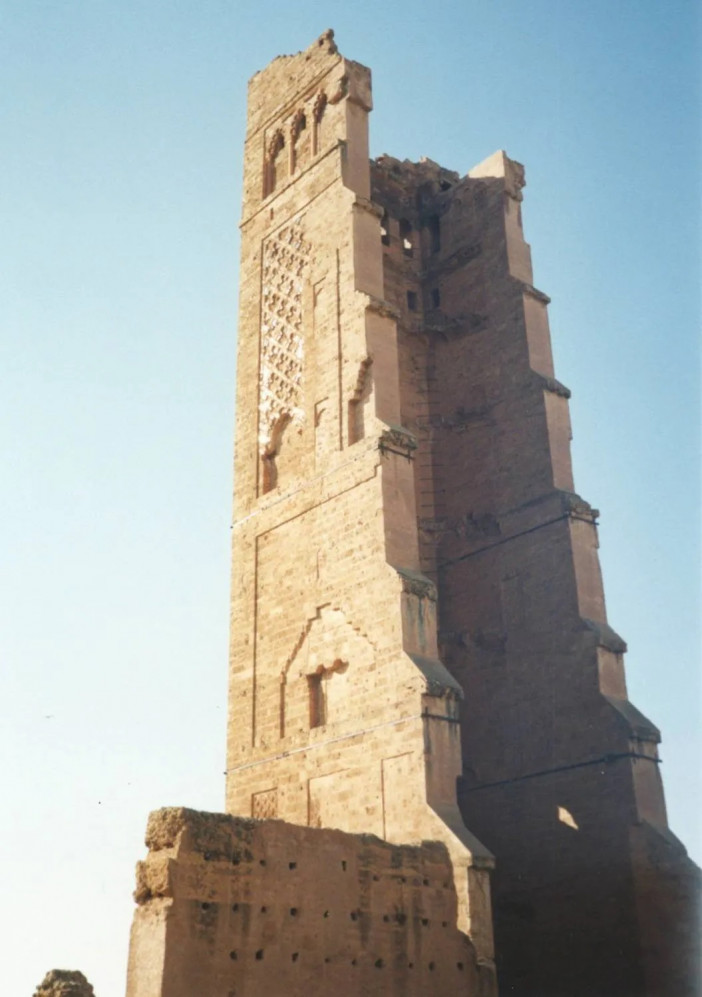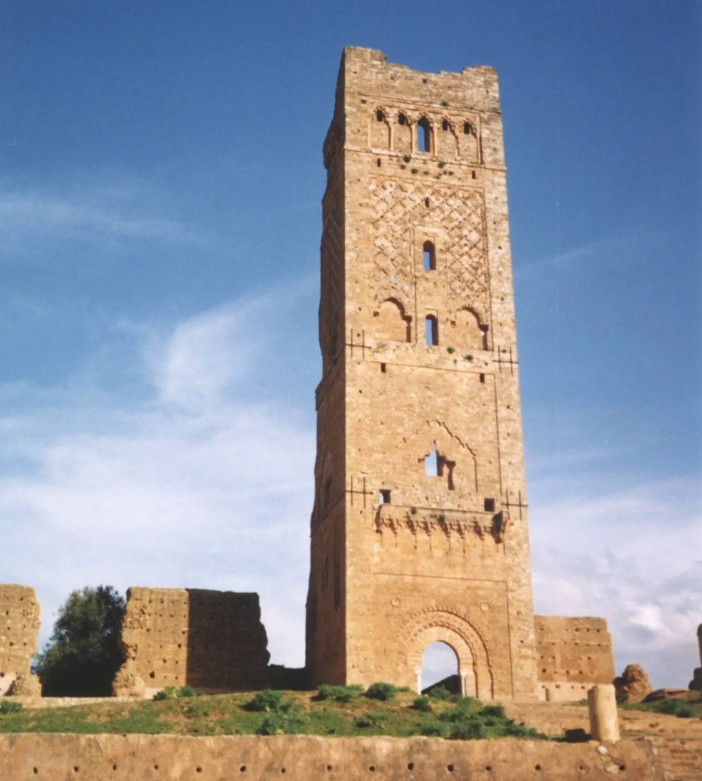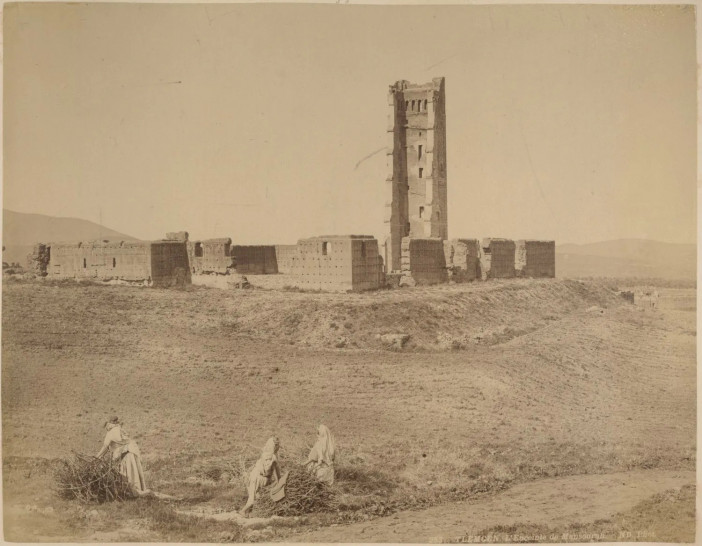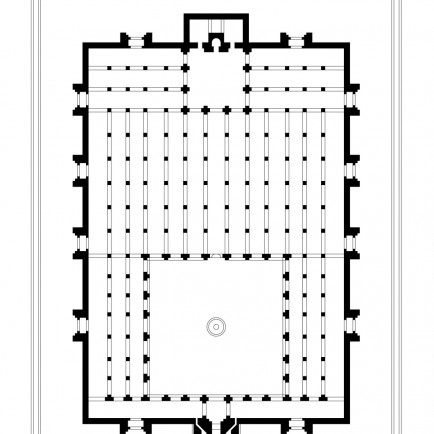Mansoura Mosque
History
According to Ibn Khaldun, the mosque of Mansurah was built around 1303 by Sultan Abu Yaqub Yusuf an-Nasr, who died before the completion of his work. The death of the ruler was immediately followed by the evacuation of Mansurah by the Merinids, and work did not resume until 1336 when Abu al-Hasan ben Uthman rebuilt the city. According to Ibn Marzouk's (Musnad as-sahid al-hasan fi maʿathir mawlana Abi 'l Hasan), the mosque, like that of Hassan in Rabat, was never completely finished. Only the perimeter of its walls and the front half of its minaret remain standing
Urban and Architectural
A portion of the Mansourah Castle is included in it. The mosque was established around 1303 by Sultan Abu Yakub, according to archaeological findings about its design, and Abu al-Hassan decorated its main gate in 1336. There are 13 doorways inside the yard, all of which are walled off, and there is a sahn in the center with a fountain. Three passageways encircle the sahn, and they have the same tilework as the prayer hall. The prayer room is immediately connected to the sahn and features tilework resembling the qibla wall, which is also present in Samarra's Baybars Mosque from the 13th century.
The mosque occupies a rectangle 60 m wide and 85 m long. The main door opens at the base of the minaret, which protrudes from the middle of the north-western side. The square courtyard, which is typical of Maghrebian mosques of the 13th and 14th centuries, is 30 meters on each side and was framed by galleries extending the aisles of the prayer room. The latter was occupied by thirteen naves divided into six bays by onyx columns 0.44 m in diameter
The mihrab, a niche with cut sides, was surrounded by a room for the dead similar to that found in the Quaraouiyine of Fez. In addition to the main entrance, twodoors built of stone, protruding on all four sides, gave access to the mosque.
The minaret, although disconnected from its lantern, stands at 38 m. A small door opening into the mosque, under the front gallery of the courtyard, gave access to the ramp which, by seven revolutions around the central core, went up to the level of the upper gallery. This ramp was lit by large openings in the middle of the four sides and by smaller openings in the axis of the ramps. The 1.50 m thick walls are made of pink siliceous stone.
Dimensions:
60 x 86 m; minaret 40 m; prayer hall 60 x 55 m
Description
The mosque's famous square minaret, which rises to a height of 38 meters and was modeled after those erected by the Almohads in North Africa and Iberia, is also accessible from the mosque's main entrance.
Details
Location
Mansourah, Tlemcen, Algeria
Worshippers
1650
Owners
Sultan Abu Yakub
Architect Name
Year of Build
1303
Area
3300
Drawings
Map
History
According to Ibn Khaldun, the mosque of Mansurah was built around 1303 by Sultan Abu Yaqub Yusuf an-Nasr, who died before the completion of his work. The death of the ruler was immediately followed by the evacuation of Mansurah by the Merinids, and work did not resume until 1336 when Abu al-Hasan ben Uthman rebuilt the city. According to Ibn Marzouk's (Musnad as-sahid al-hasan fi maʿathir mawlana Abi 'l Hasan), the mosque, like that of Hassan in Rabat, was never completely finished. Only the perimeter of its walls and the front half of its minaret remain standing
Urban and Architectural
A portion of the Mansourah Castle is included in it. The mosque was established around 1303 by Sultan Abu Yakub, according to archaeological findings about its design, and Abu al-Hassan decorated its main gate in 1336. There are 13 doorways inside the yard, all of which are walled off, and there is a sahn in the center with a fountain. Three passageways encircle the sahn, and they have the same tilework as the prayer hall. The prayer room is immediately connected to the sahn and features tilework resembling the qibla wall, which is also present in Samarra's Baybars Mosque from the 13th century.
The mosque occupies a rectangle 60 m wide and 85 m long. The main door opens at the base of the minaret, which protrudes from the middle of the north-western side. The square courtyard, which is typical of Maghrebian mosques of the 13th and 14th centuries, is 30 meters on each side and was framed by galleries extending the aisles of the prayer room. The latter was occupied by thirteen naves divided into six bays by onyx columns 0.44 m in diameter
The mihrab, a niche with cut sides, was surrounded by a room for the dead similar to that found in the Quaraouiyine of Fez. In addition to the main entrance, twodoors built of stone, protruding on all four sides, gave access to the mosque.
The minaret, although disconnected from its lantern, stands at 38 m. A small door opening into the mosque, under the front gallery of the courtyard, gave access to the ramp which, by seven revolutions around the central core, went up to the level of the upper gallery. This ramp was lit by large openings in the middle of the four sides and by smaller openings in the axis of the ramps. The 1.50 m thick walls are made of pink siliceous stone.
Dimensions:
60 x 86 m; minaret 40 m; prayer hall 60 x 55 m
Description
The mosque's famous square minaret, which rises to a height of 38 meters and was modeled after those erected by the Almohads in North Africa and Iberia, is also accessible from the mosque's main entrance.


